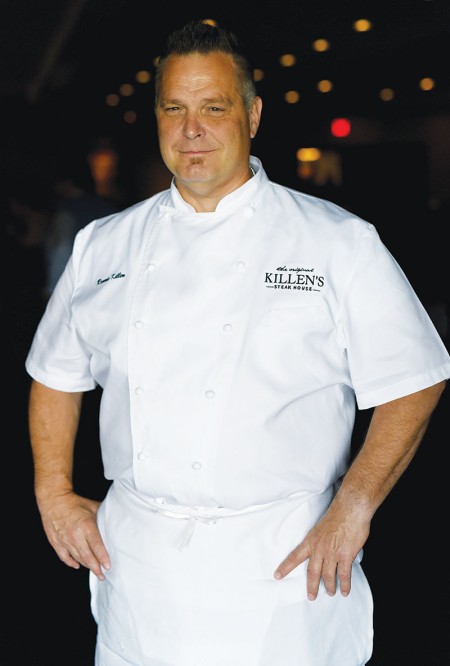Chef's Corner: Ronnie Killen

Find out where the experts eat, with our Chef’s Corner column. This month, restaurant writer Dai Huynh interviews chef Ronnie Killen.
Back in 2006, London-trained chef Ronnie Killen set out to educate Texans about beef with his signature steak flights. Ever since, the Texas native has been on a roll as the king of Pearland dining with his upscale Killen’s Steakhouse (6425 W. Broadway), Killen’s Barbecue (3613 E. Broadway Street) and, his latest addition, Killen’s Burgers (2804 S. Main). Here, he shares his favorite steakhouses and how to shop for steaks.
How have meat-and-potato restaurants evolved since you opened your white-tablecloth steakhouse?
I remember 10 years ago, when everything was your classical à la carte steakhouses with standard wet age beef and standard sizes. Now, people are more open to trying different cuts of meats. Our steakhouse helped to lead the way for that. I got the idea for our steak flights eight years ago in Napa [California]. I had a flight of wines, and I thought, “Why can’t we do that for steaks?” Give people different options to try, 2-3 ounces each, so people can really see the difference between a corn-fed steak versus one that has been on a diet of all grass. The tasting flights really helped to open people’s eyes.
How much are the steak flights?
It’s $110 for four 3-ounce steaks – a Japanese, Australian and Texas wagyu, along with one from Idaho. When you compare them side-by-side like that, it’s like ice cream and frozen custard – the difference is in the mouth-feel and fat content. Some people love the heavy marbling; others find it offensive, too fatty.
Ok, so ’fess up, Ronnie. Where do you go for steaks?
Cut in Beverly Hills Wilshire in California. It’s a Wolfgang Puck restaurant, and when I went there six years ago, it opened my eyes about steaks. It inspired me. Here is a steakhouse, where everything is about being fresh, complete with a daily menu, which tells you exactly whether it had been grass fed or corn fed, dry aged or wet aged. It went into the different regions around the world. Cuts is a fine-dining steakhouse, where the plate I was eating on probably cost more than my restaurant. But it was worth it.
Now, closer to home, I’ve heard really good things about Steak 48. I haven’t been, but that is one Houston restaurant I want to try. Of course, I’ve been to Vic & Anthony’s, Pappas Steakhouse and others.
Give us some tips on picking the best steaks to cook at home. What should we look for at the grocery store?
People will pick out the steaks that are lean and really red, thinking that these are the freshest cuts. But I tell people all the time to get the lightest color they can find at the store. When steak is dark red, maroon in color, it tells you that animal has been fed a lot of grass. You’ll get a livery, mineral taste. But the meat with a nice light pink color means there is more inner muscular marbling. It will tastes richer, more flavorful. I’m not a big fan of grass-fed beef. I know some people are. As for how to cook it. I pan-fry my prime cuts. I render the fat and sear it at about 425-450 degrees. I keep it simple with salt and pepper.
Want more buzz like this? Sign up for our Morning Buzz emails.
To leave a comment, please log in or create an account with The Buzz Magazines, Disqus, Facebook, or Twitter. Or you may post as a guest.



